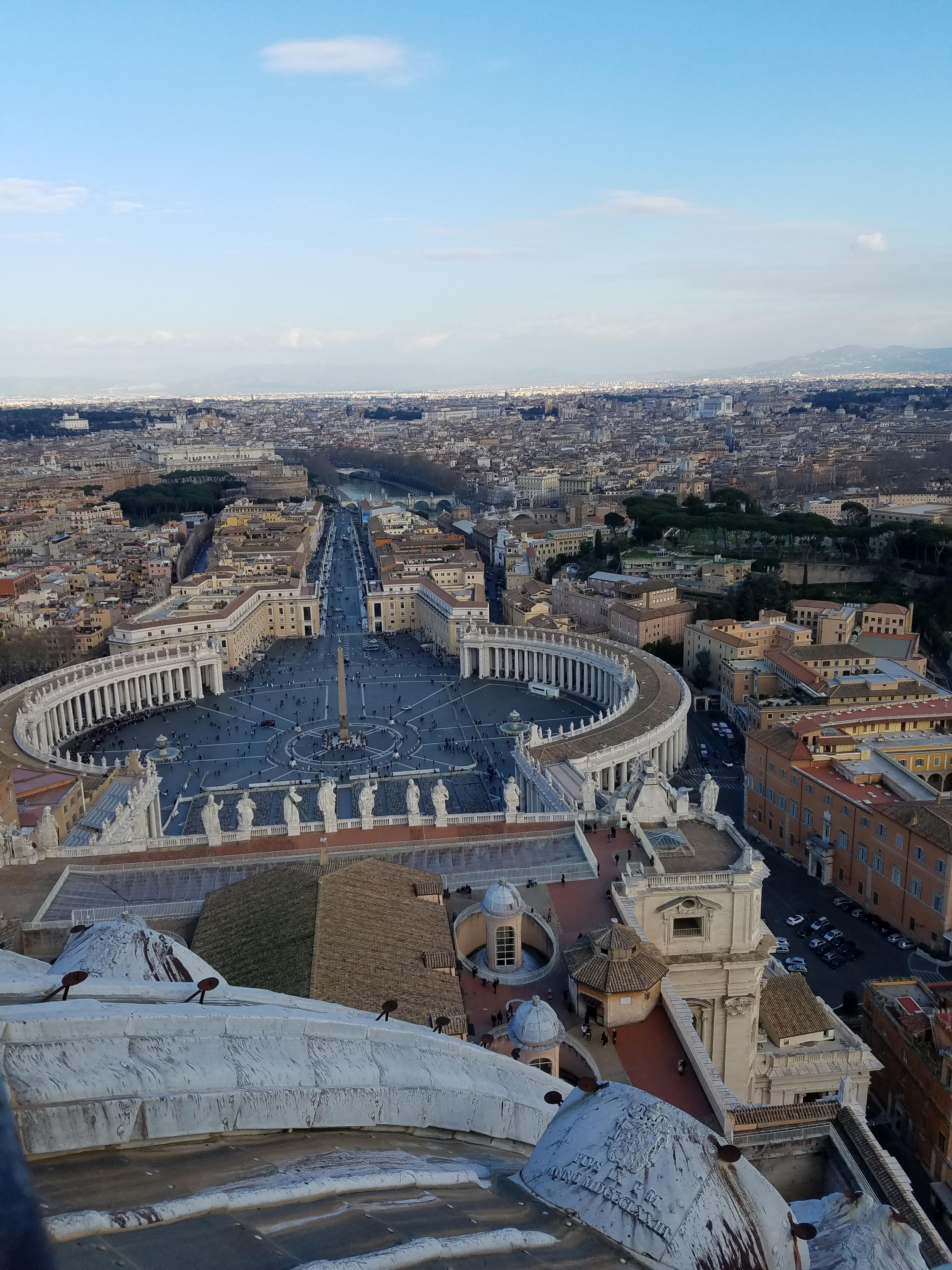

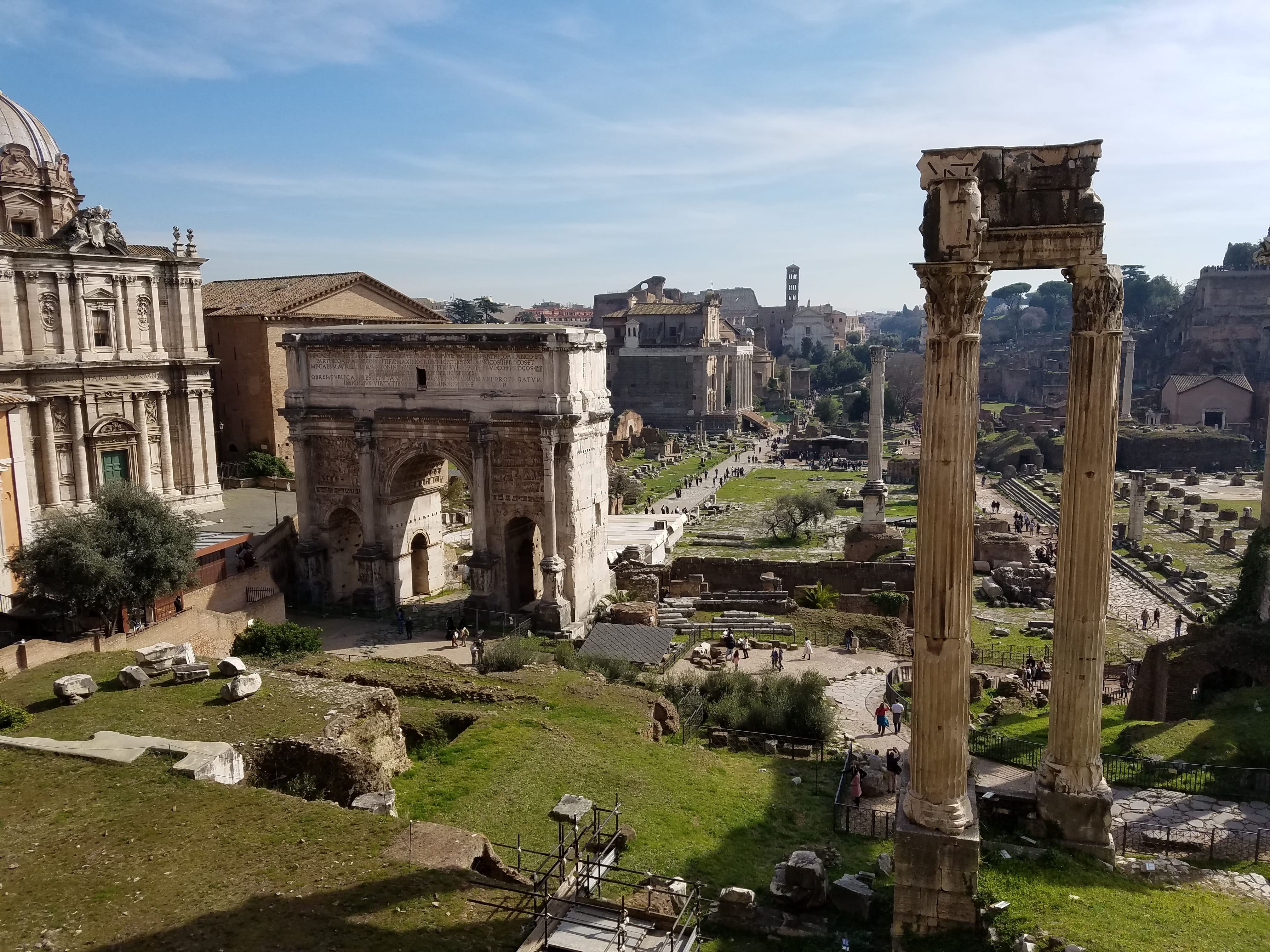

intense training schedules of gladiators, we walked around it with wide eyes. Not only was the Colosseum a source of entertainment for the senate and emperor, but the masses as well. The violent place brought a whole civilization together.

A history buff like Lina was in her element in Italy over GTL’s spring break. Scroll through her steps – and learn something about the history of Italy along the way!




intense training schedules of gladiators, we walked around it with wide eyes. Not only was the Colosseum a source of entertainment for the senate and emperor, but the masses as well. The violent place brought a whole civilization together.

Skiing is all the better when the area hosted a Winter Olympics! Check out where Lina went this weekend – and how she talked her way into a crowded restaurant.
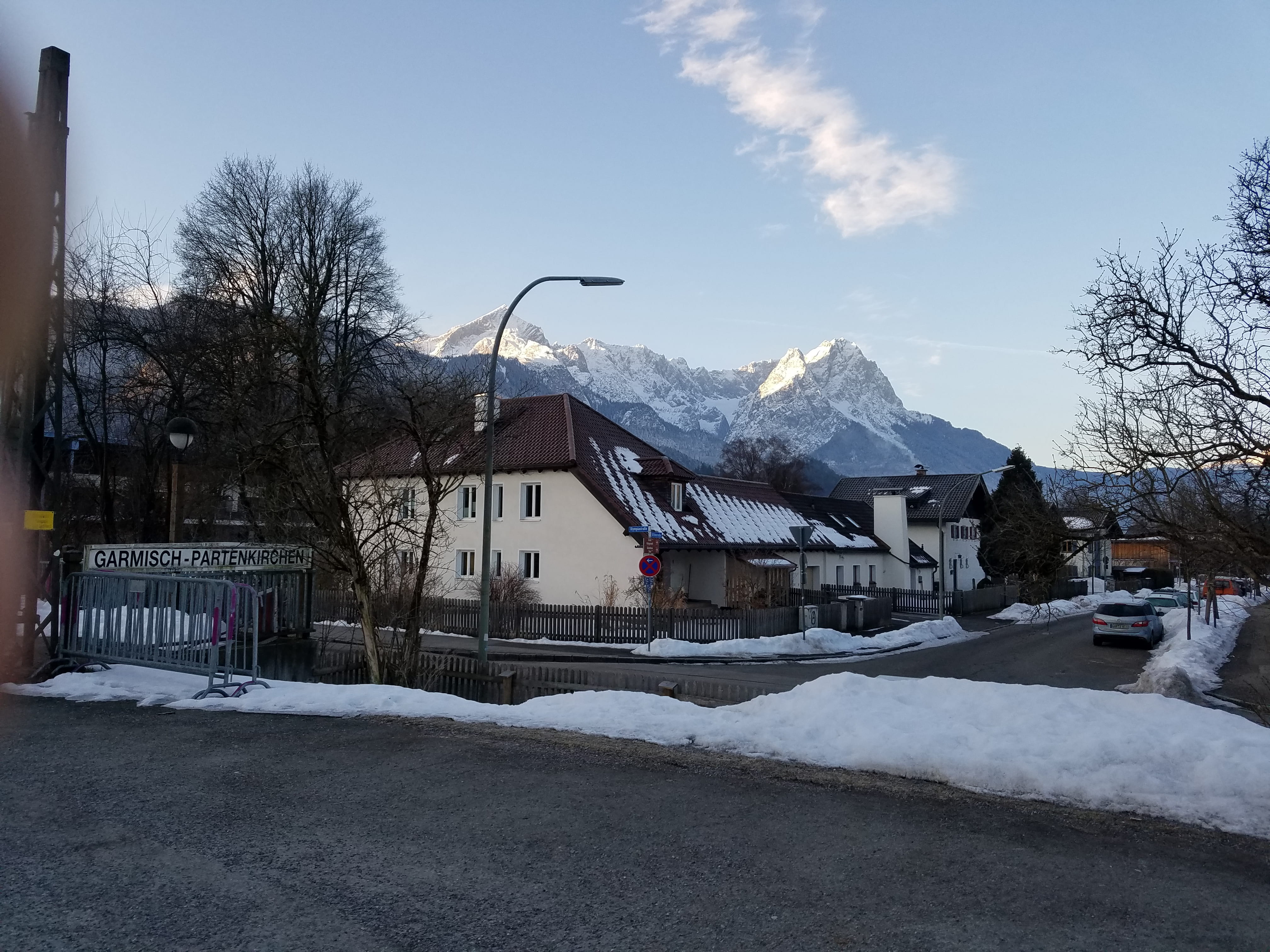



Sam tackles the differences between living in the U.S. and Europe – and the conclusion he comes to is nothing short of poetic. Take a look at his latest blog post!

Having never traveled to Europe in my short life, my view of this continent has been purely framed through the looking glass of media and pop culture. In fact, everything outside of the United States has seemed like almost an abstract, foreign concept. I feel as if a lot of people, myself included, who have had few experiences outside of their own bubble are subconsciously fixated on the idea that people in other places are somehow different. But, after moving to Europe for the semester, I’ve realized that despite being thousands of miles away and on another continent, this is still planet Earth inhabited by human beings. This may sound obvious to you, and of course it should be; this thought process isn’t taking place on a conscious level, but a subconscious one.
Of course there are also a lot of little interesting differences I’ve noticed too, and just for fun I thought I’d share a few of my observations.
These were just a few of the things that stuck out to me since coming here, but are more simple quirks than real differences.
Going back to my main point, it’s easy for me to forget that I’m actually living in an entirely foreign country a lot of the time. I don’t know why, but when I’m walking back from a day of classes, there’s this one spot along my walk where I always just have a little mini realization: “Holy cow, I’m in Europe!” Nothing really looks or feels different in Europe, and it’s an amazing little epiphany that my subconscious has had in realizing we are in fact all living together on one planet that, whether we like it or not, we all must share.
Sometimes things just work out a little grappig! Read Sam”s hilarious account of his travels to the historic and spunky city of Amsterdam.
If I told High School Me that I got to drink coffee in the same room as about twelve cats, explore a 19th century Dutch pirate ship, and make tacos in a stranger’s house all in one day, High School Me would probably have thought that Present Day Me was a fictional character living in the wonderful fantasy land, Future-Magic-ville. Well, dear High School Me, I got to drink coffee in the same room as about twelve cats, explore a 19th century dutch pirate ship, and make tacos in a stranger’s house all in one day, ALL IN AMSTERDAM (which pretty much is, for me at least, Future-Magic-Ville)! This weekend was, to say the least, pretty great!
First of all, let me tell you a little about The Netherlands, and Amsterdam in specific. The city of Amsterdam (earlier known as Amstelledamme, named after the dam in the Amstel river by which the city was centered) was founded in the 13th century as a fishing village. Or did you know that the Dutch East India Company is actually called Vereenigde Oost-Indische Compagnie in Dutch?
This brings me to another fun thing about the Netherlands: their language. Let me declare how deeply in love I am with the Dutch language. It is the perfect mix between English, German, and magic, and everyone looks so cool when they speak it! My favorite word so far, is “grappig,” which means “funny”, and it is, in fact, said in a very funny way. I learned this word at a small white marble table in the corner of a cat cafe, where I saw a lady keep pointing at the cats and saying, “Grappig! Grappige Kat!” One of my high school friends who I met up with that weekend actually is Dutch, so he was my translator the whole time, and he taught me a couple phrases in Dutch. However, the only thing I can remember now is how to say funny, which will not help me out, except maybe in a conversation about cats living in a coffee shop.
Now onto the cat cafe. Picture this: you’re enjoying a nice macchiato, an old friend sitting on either side of you, the room temperature is perfect – warm and cozy.  You’re just about to have a third sip of your coffee when you notice a slight shift in your friend’s eyes. You look down to follow their gazes and there, right in front of you, is a fluffy, white cat, walking past your table. Your eyes follow him as he struts across the room, and you start noticing more things, more cats. About twelve. There are about twelve cats in the same space as you. This was definitely a high point in my life.
You’re just about to have a third sip of your coffee when you notice a slight shift in your friend’s eyes. You look down to follow their gazes and there, right in front of you, is a fluffy, white cat, walking past your table. Your eyes follow him as he struts across the room, and you start noticing more things, more cats. About twelve. There are about twelve cats in the same space as you. This was definitely a high point in my life.
After brunch at the cat cafe, my friends and I went to the Maritime Museum, where  we spent about 20% of our time learning semi-useful information, and the rest of time playing on the giant pirate ship that was docked in the back. Granted, it wasn’t actually a pirate ship, but it was still really cool getting to run around on it, pretending to be crewmen! We were able to lay in tiny boat hammocks and walk through a life-sized whale sculpture within the same hour. We were having a wonderful day so far. Once we hit the three hour mark at the museum, my friends and I decided to head back to our AirBnB to make dinner. On the way home, we stopped at a grocery store and got all of the necessities for making tacos, plus a box of chocolates for our hosts (Pro tip: when staying with a host family, leave them a nice box of chocolates and a sweet note. You can never go wrong with a nice box of chocolates and a sweet note).
we spent about 20% of our time learning semi-useful information, and the rest of time playing on the giant pirate ship that was docked in the back. Granted, it wasn’t actually a pirate ship, but it was still really cool getting to run around on it, pretending to be crewmen! We were able to lay in tiny boat hammocks and walk through a life-sized whale sculpture within the same hour. We were having a wonderful day so far. Once we hit the three hour mark at the museum, my friends and I decided to head back to our AirBnB to make dinner. On the way home, we stopped at a grocery store and got all of the necessities for making tacos, plus a box of chocolates for our hosts (Pro tip: when staying with a host family, leave them a nice box of chocolates and a sweet note. You can never go wrong with a nice box of chocolates and a sweet note).
The day was over, our bellies were full, our spirits were high, and we all slumbered off to prepare for the long day of traveling ahead. One of my friends, who flew in all the way from Oxford had to leave the house at six in the morning to catch his ten o’clock plane. Thankfully, my train didn’t leave until about one, so I could sleep in a bit and have a slow morning. My Dutch friend took me to the train station with me later that day and we had brunch at a small cafe across the platform. We hugged, said our goodbyes, and I hopped on the train for a seven to eight hour journey back to GTL.
Amsterdam was a beautiful city, and I am definitely going to visit it again. If you ever find yourself in the land of clogs and tulips, I highly recommend the cat cafe, Maritime museum, and checking out the local farmers markets. You can get a bit of culture, history, and cats in one day’s visit, and that, to me, seems like a pretty spectacular way to spend a weekend!
Before I leave you for the time being, here is your French Word of the Week!
Comment (adv.): how, what
Example in a Frenglish conversation:
Tim: “Hey Sam, comment in the world did you get that limited edition shirt?”
Sam: “Strange wording, but yes I can comment on my shirt. It has gray piping and a white base, and it actually used to belong to John Cena…”
Sam went to Salzburg, too! Featuring breathtaking pictures, Sam’s blog post ventures into the story of his travels in the Austrian city and an examination of how far he’s come. Check it out!
Salt, in my opinion, is one of Man’s greatest discoveries. Throughout Earth’s many, many years, people have figured out that excessive amounts of salt could preserve food, pinches of salt could enhance the flavor of your meal, and that one little grain could make a pesky slug shrivel up in fear and pain. When breathed in with humid air, salt can clear up your sinuses and leave you feeling rejuvenated (to an extent).
While I’m here at GTL, I plan on traveling every weekend – maybe every other weekend – to a new city. So far, I’ve only made it to Paris, but I spent this last weekend in one of the most beautiful cities I have ever been to – Salzburg, Austria. The name, Salzburg, quite literally translates to “Salt Castle,” so I felt almost right at home, with the city’s given name being a combination of two of my favorite things: salt and medieval things! Since the dark ages, Salzburg has definitely grown, both commercially and residentially, into a hotspot for tourism, which is what I assume to be a result of it both being the birthplace of Mozart, one of the history’s most well known and most talented classical composers, and it’s direct link to the Salzberg, which translates to “Salt Mountain”. Luckily, I had enough time in the nearly two days I was there to explore both of these sites and more, while having the best time ever!

Part of the main square in Salzburg
After a nearly seven hour trip, I arrived at the Salzburg Hauptbahnhof late on a Friday afternoon. I was with two of my friends from GTL, and for fear of getting lost and spending too much money and time trying to figure out the bus system, we walked the two kilometers to our hostel (which normally would not be a problem, but there was about two feet of snow covering the sidewalks, and where there wasn’t snow, there was very, very slippery ice). Once at the hostel, the three of us checked in, got settled in our room, and recuperated for an hour or two before deciding on where to eat dinner. Landing on a local schnitzel hall, we made our way, following the lust of our rumbling stomachs, into a large, loud, smoke-filled old monastery that had been transformed into a place of drunk and merry Austrians. We went back to the hostel that night, our bellies filled, our spirits high, and prepared ourselves for the day ahead of us.
Early Saturday morning, another friend of ours made her way to the hostel to drop off her things and set off with us on another great adventure. We left at around nine or so and headed to the Hauptbahnhof to catch a bus to the very famous salt mines that lay about thirty minutes away, nestled deep in the Salt Mountains. Unfortunately, we got mixed up in the bus system, missed the original bus we should have taken, and ended up waiting another hour for the next one. We killed a bit of time walking around the small shopping mall right outside the station, and got some tea and coffee to keep us warm until our transportation arrived. Finally, after an hour of waiting in and out of the freezing Austrian weather, our bus came, and we were headed towards a day of salt and castles.
Once at the salt mines, we were instructed to put on these black, thick, canvas-like body suits over our clothes, and were given small audio translators for the tour. We all followed a group of people onto this roller coaster/train thing that drove us deep underground. At the end of the ride, we got off the train and walked over to a giant slide that was to take us even deeper into the mine. The whole lot of us was being led by a tour guide who taught us a lot of interesting things about the mine, including it’s history, the salt-extracting processes, and the importance of salt in the world, but more specifically, Salzburg.
During the tour, there was a boat ride, complete with really cool visuals and music accompaniment, over the beautiful Mirror Lake. The water was so reflective, that it looked transparent. It was definitely one of the cooler things nature has shown me. Learning about salt all along the way, we had one more slide to go down, an elevator to go up, and a short train ride to finish the tour. Afterwards, I found myself in the gift shop, buying a 60 cent box of salt, because I mean, that’s a 60 cent box of salt, why would you not buy it?

The salt mine!
Later on that day, we spent about 2 hours touring the castle and Cathedral. The views from the upper courtyards were spectacular, and I felt like I was a great king looking over his great kingdom. Not really, but it was cool to pretend for a minute! My friends and I had nearly explored the whole place, when, alas, it was closing time. My biggest regret of the day was that we didn’t visit the castle earlier (but hey, I can always go back for Salzburg part two). After leaving the castle, we traveled back to the hostel to drop off souvenirs and get pro-tips on where to eat. An Australian who was in our room ended up going out with us, which was actually really cool because I had never met anyone and had a meal with them that same day!

A wonderful view from the top of the castle
On Sunday morning, we checked out, headed to the Hauptbahnhof, and started our seven plus hour journey back to GTL. On the train ride back, I was reflecting over the weekend and talking with my friends about how much life has to offer us. Life is full of really cool experiences, and really cool people, and I feel that if you open your heart and mind just a little, you can take a glimpse at what this world has to offer you! This weekend forged some really interesting friendships, and it made my relationships with my friends from GTL even stronger. The whole point of this extremely long post is that Europe is amazing, and that people should travel young, especially alone or with a very small group of people, while their responsibilities aren’t too much. I feel like I have definitely matured and become more independent than I ever was before, and most of that is due to me jumping head first into an ocean of different cultures and languages. Life is good!
And without further adieu (get it?), I leave you with the French Word of The Week!
Jars (noun): gander, male goose
Example in a “Frenglish” conversation:
– Sarah: “Hey Sam, come look at this cool Jars! It has a really long wingspan!”
– Sam: “Glass bottles don’t have wingspans…”
Prague is a city of deep history and great beauty. Lina gives a quick look into that which makes Prague a bucket list destination.
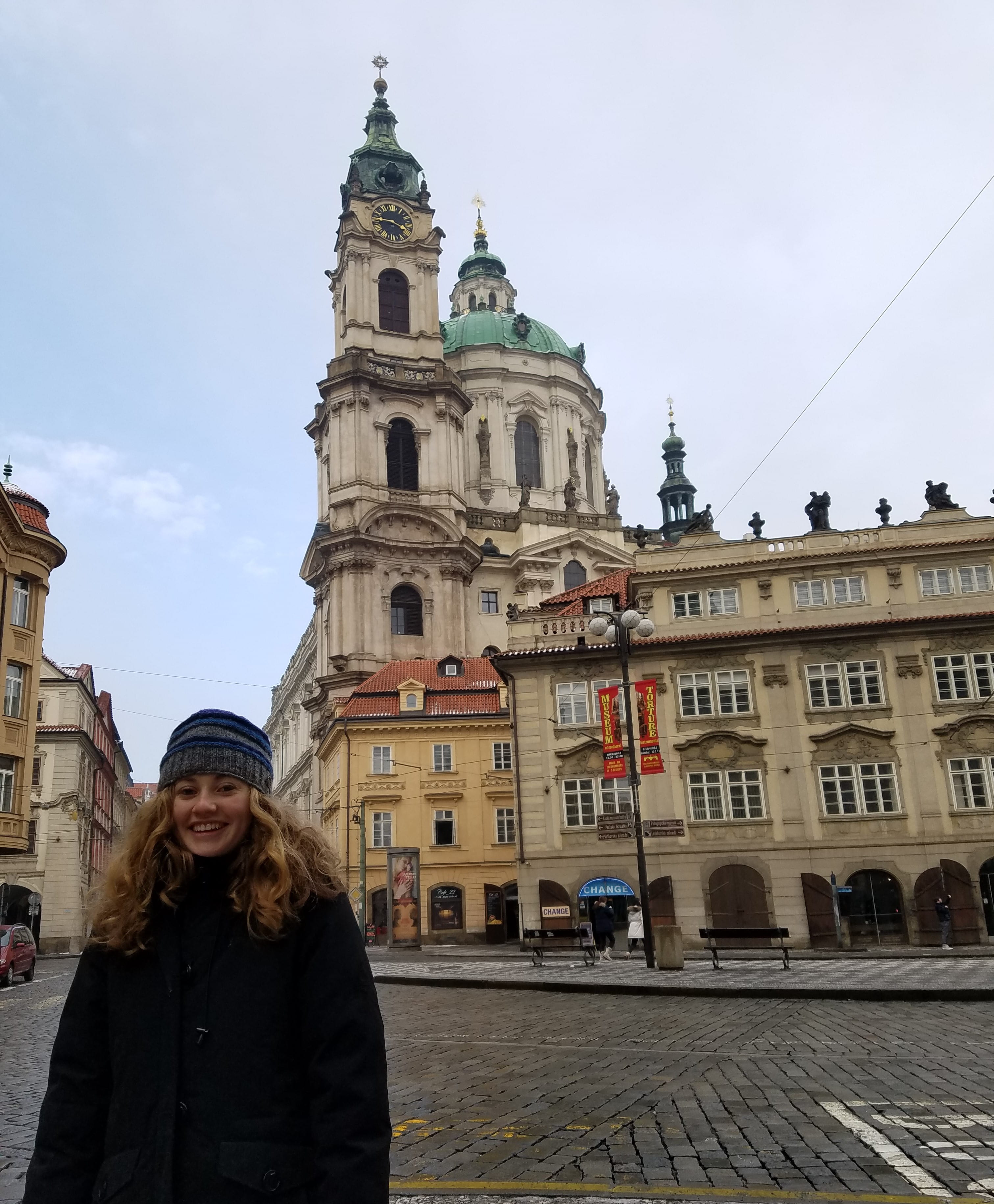
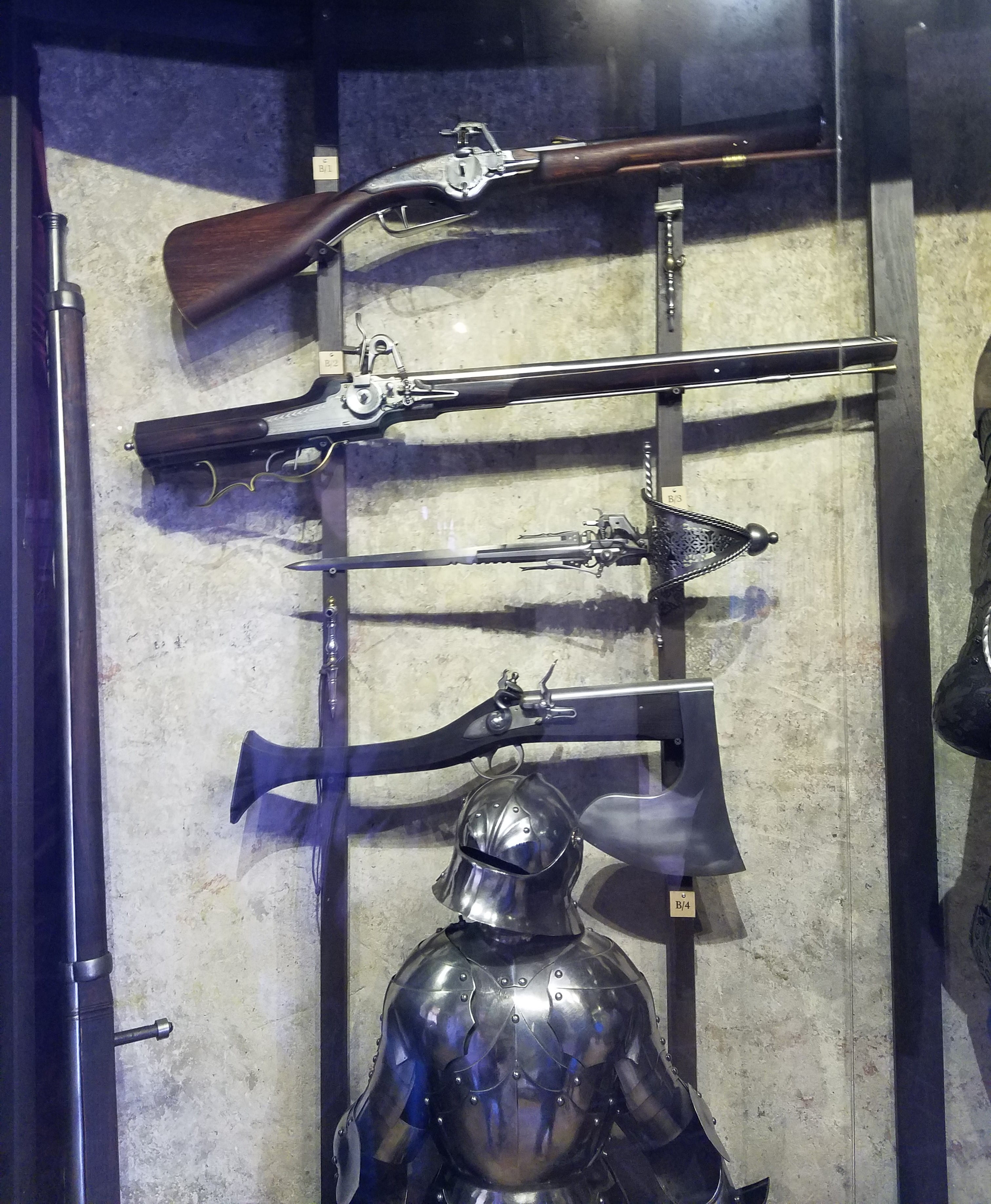

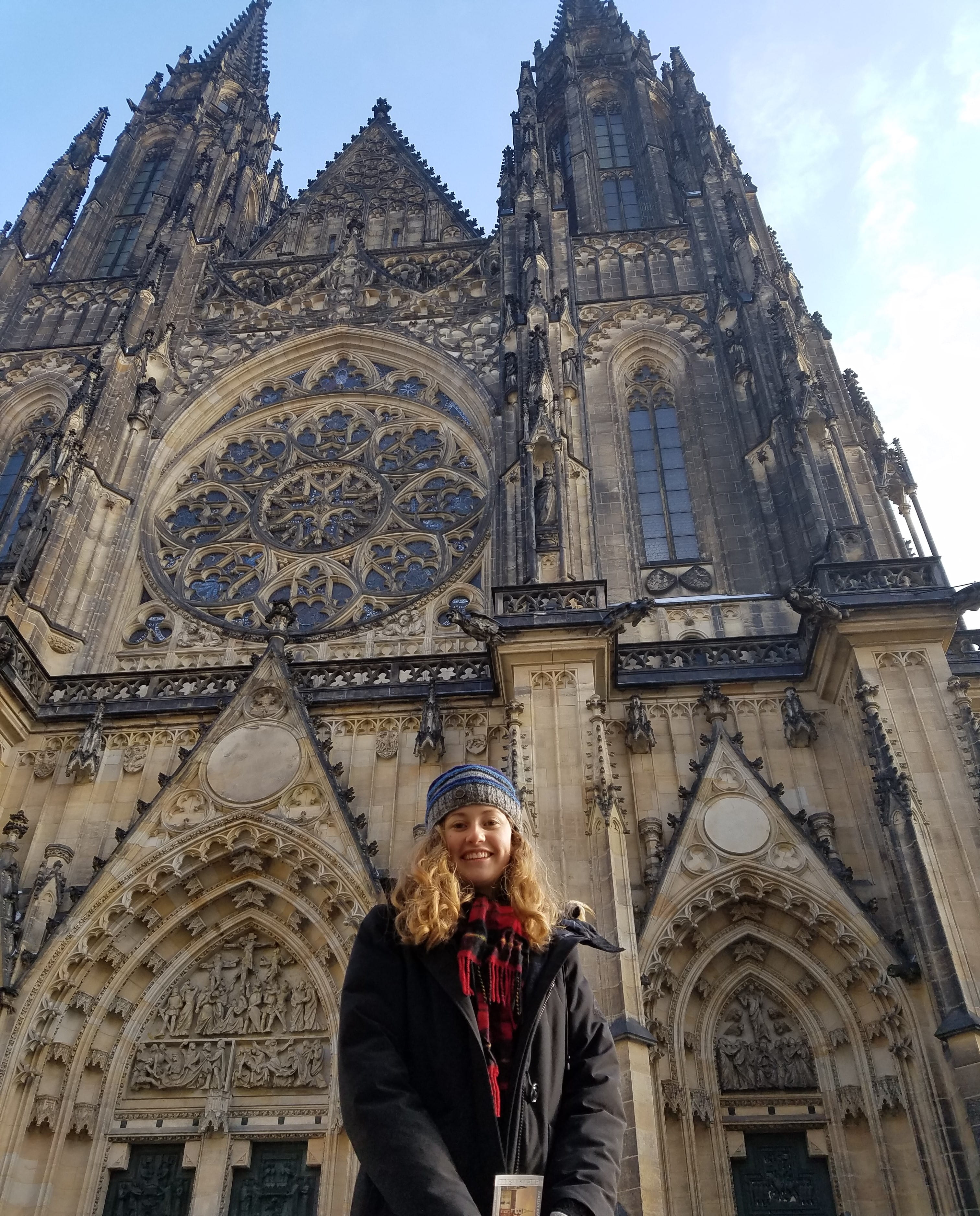
The museum was cool because it showed a Prague citizen’s perspective on such violent events that were happening in his lifetime. Prague only became free six years before I was born. It was amazing to read about and honor the people that fought to make their own home country a better place for their children, and for tourists like me that can visit now but couldn’t thirty years ago.
Where in the world was “The Sound of Music” filmed? That’s where Lina went this weekend – check out why its people are known for their salt.

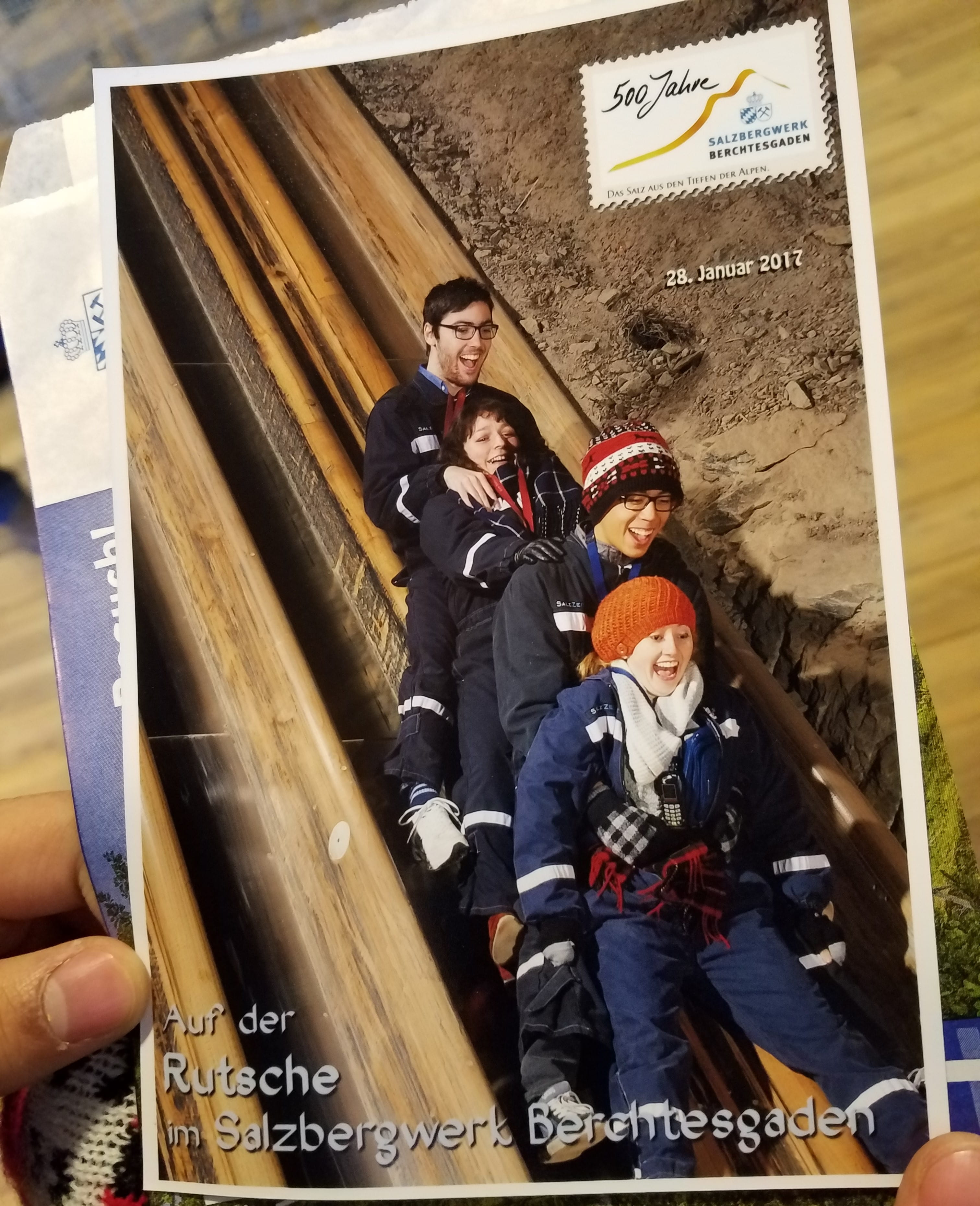
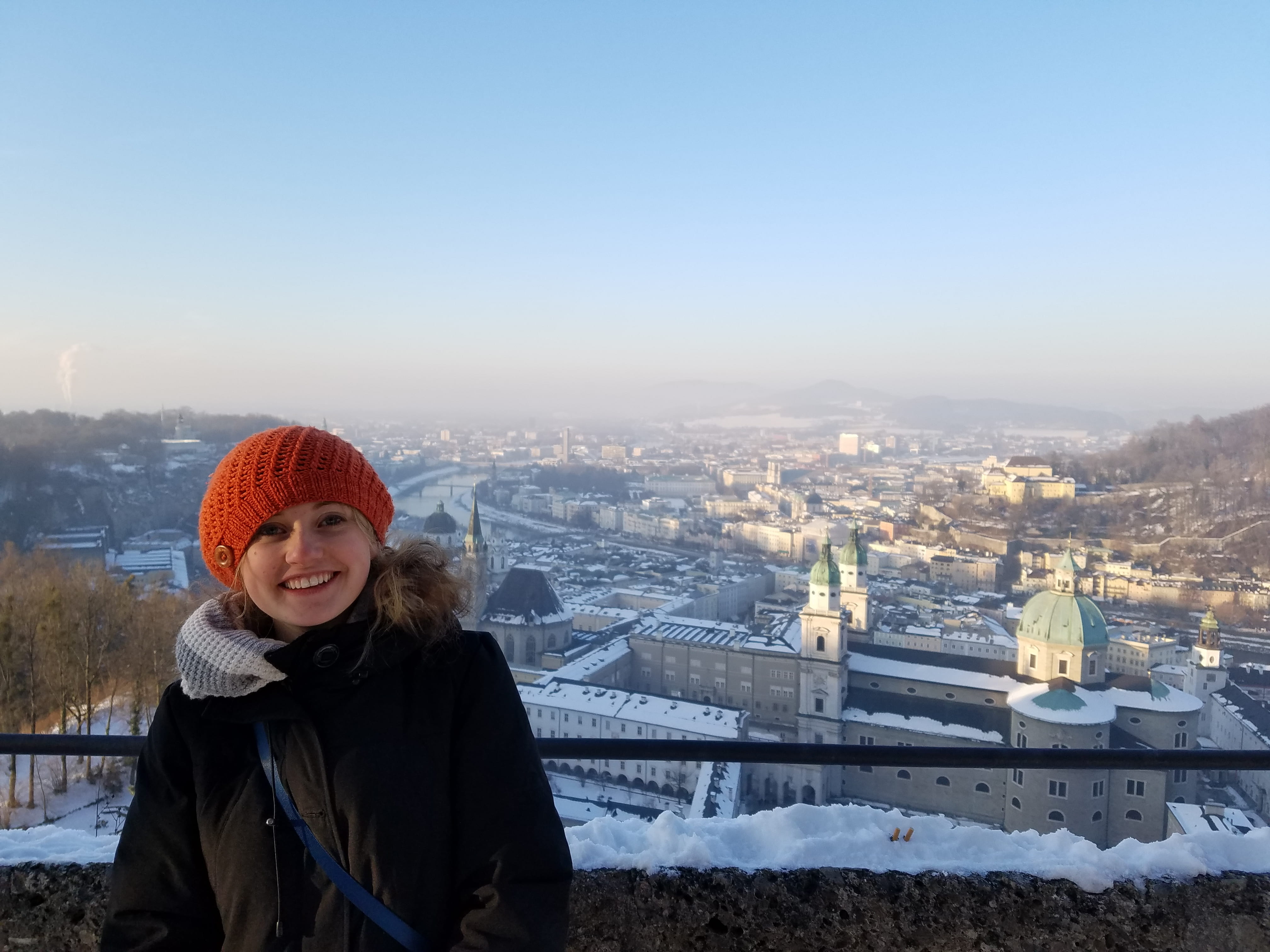
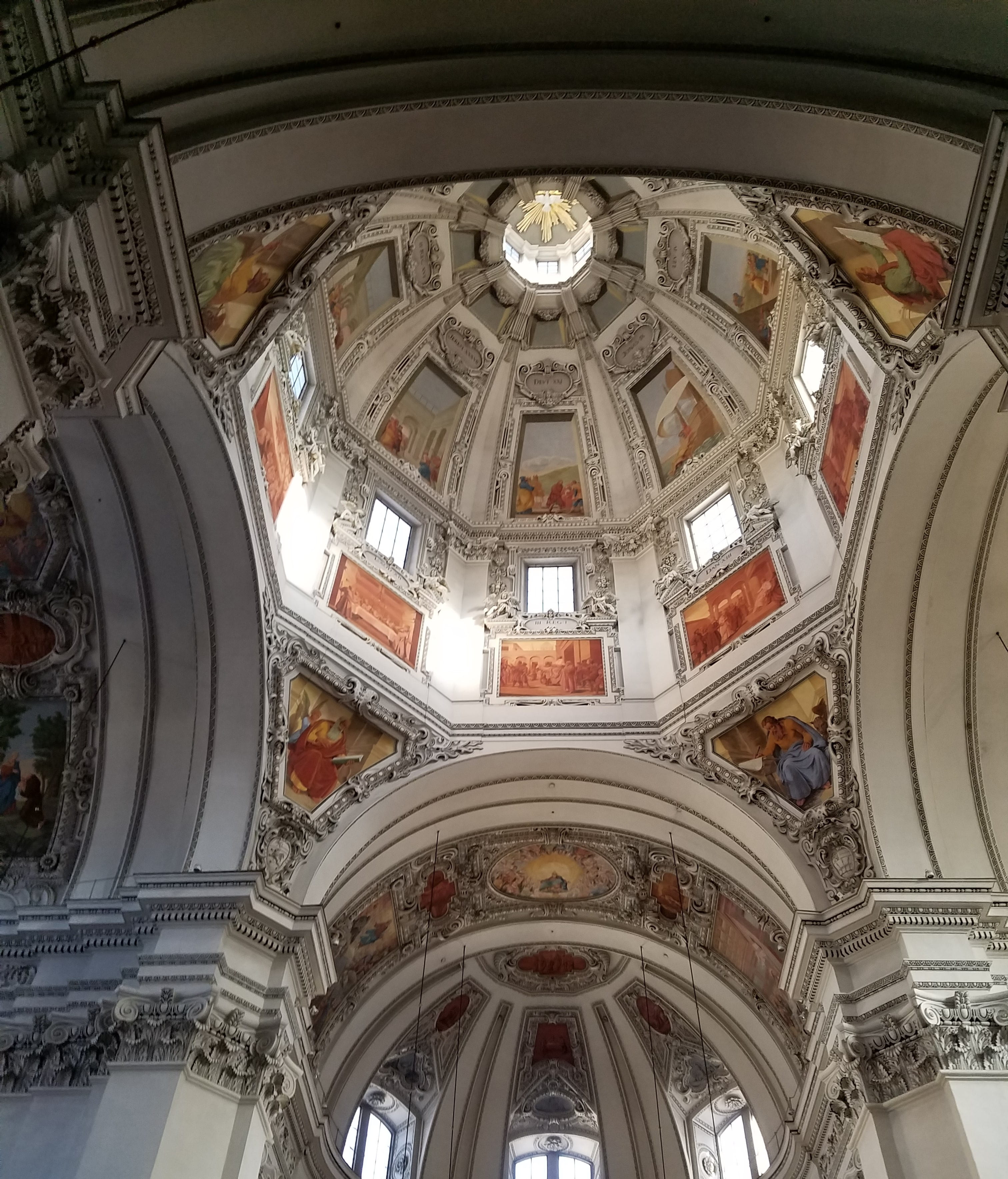
Dreaming of Paris? Take a peek into Lina’s itinerary this past weekend – and learn a few facts about the city, too!


Liberty project together. It took 2.5 million rivets to hold the structure together. If you gave everyone in Atlanta 4 rivets, you still would not have enough rivets to build the Eiffel tower. The tower was meant to be temporary, and was scheduled to be torn down in 1909. However, it was saved because officials argued that it could
be used as a telegraph tower. In World War I, it was instrumental in intercepting enemy communications.

priceless masterpieces. I especially love Degas because he usually paints and sculpts ballerinas as his subjects. As a ballet dancer, the way he captures the motion and fluidity of this style of dance really speaks to me.

Sam took his first weekend trip – and went full-blown, “selfie stick, souvenir-buying” tourist. Can you guess what his first destination was? Check out his blog to see if you’re right!

Although we often stick out worse than a Shetland pony in the Kentucky Derby, sometimes just being an unabashed tourist is worth it. This last weekend, I went to Paris, one of the top 3 tourist destinations in the world and we decided to just bite the bullet and go full out Hawaiian t-shirt, selfie stick, souvenir-buying mode. We saw everything from Notre Dame and the Louvre, to the Red Light District and the Arc de Triomphe, to of course, the most iconic landmark in the world, McDonald’s. I do admit to feeling a bit uncomfortable when I feel like we’re broadcasting to the world: “Stupid Americans, right here!” but these landmarks are actually worth seeing. It’s mind boggling the amount of history behind this city and France itself. I’m currently living in a continent with recorded history dating back hundreds of years before anything was really written down in the Americas. The Notre Dame cathedral in particular literally stunned me into silence. It was a profound experience being able to view this testament to sheer human willpower and ingenuity.
However, there is another side to traveling. These famous buildings and pieces of art that Paris is known for are truly awe-inspiring. However, these things only make up the superficial layer of what the city really is. With only 2.5 days I can’t say that we really got to know Paris, but did try to get a feel for what the city really was while we were there.

While the daylight hours were taken up with trying to see every last famous piece of history in Paris, in the evenings we tried to relax a little more and explore the less touristy side of things. Despite how great the sightseeing was, I can say with certainty that my favorite part of our visit was Saturday night when we found a tiny little French cafe to eat dinner in. You know you’ve found something a little more real when you feel very out of place. We were most certainly the only non-locals there, and I could tell the staff was not used to serving people whose French closely resembled that of a 4 year-old ostrich. However, despite all that, they treated us extremely well and were the best hosts we could have asked for. We stayed at the restaurant for the better part of three hours, just enjoying our food and relaxing after 9 hours of walking (rest in peace, feet). Having conversations in broken Franglish with the locals while eating amazing French food was a truly great experience.

My first time traveling for the semester was exciting, humbling, exhausting, and incredibly rewarding. After so many hours walking in the bitter French cold, anything above zero degrees Celsius feels balmy and I’m fairly certain my feet no longer work, but I wouldn’t have traded that experience for the world. I can’t wait for a whole semester filled with traveling to interesting and historic places, and how much I will grow as a global citizen through it. Thanks for coming along on the journey with me, and I’ll see you next time!
Guess where the World Handball Championships are being held this year? Metz! And guess who scored a seat to a match? Our GTL blogger, Lina!

Angola, sadly, lost terribly, scoring only 20 points to Spain’s impressive 42. Even though the game was definitely a total blow-out, it was still an amazingly immersive experience to be part of the crowd at such a traditional, celebrated European sporting event. This is what immersion is all about.